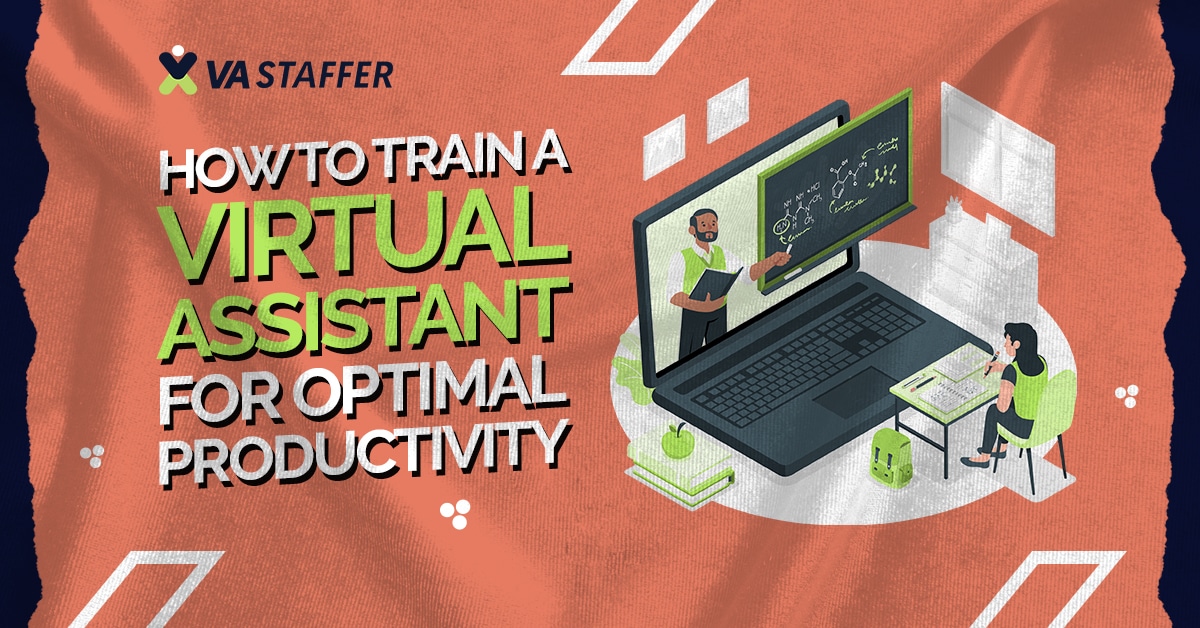In this blog post, we’ll examine various approaches to effectively manage your remote team and maximize the performance of your virtual assistants, including creating task lists and guides with comprehensive SOPs (Standard Operating Procedures) and screen capture tools so that you will know how to train a virtual assistant no matter where they are in the world.
Table Of Contents:
- Creating Task Lists and Guides
- Developing Detailed SOPs for Every Task
- Utilizing Screen Capture Tools to Demonstrate Processes Visually
- Setting Clear Expectations and Goals
- Mastering Self-Motivation & Discipline as a Virtual Assistant
- Maximizing Your Virtual Assistant’s Potential
- Utilizing Feedback for Continuous Improvement
- FAQs in Relation to How to Train a Virtual Assistant
- Conclusion
Creating Task Lists and Guides
Are you struggling to figure out how to train a virtual assistant? Could that be the reason why you’re procrastinating on hiring one?
To make things easy for you, create task lists and comprehensive guides to outline their responsibilities and provide step-by-step instructions.
Developing Detailed SOPs for Every Task
Save time on training and ensure consistency over administrative tasks by creating detailed Standard Operating Procedures (SOPs) for every task. Administrative tasks can overwhelming at first. Having SOPs can help streamline your VAs job and reduce handholding.
Utilizing Screen Capture Tools to Demonstrate Processes Visually
A picture can often communicate much more than a lengthy description. Use screen capture or video recordings like Loom or Snagit to create visual demonstrations of how tasks should be completed.
- Action Step: Create an organized library of all relevant SOPs and video tutorials for easy access.
- Bonus Tip: Encourage feedback from your VA on these resources to make improvements.
Incorporating these tips into your VA training process will make a world of difference. So, get started on creating those task lists and guides today.
Setting Clear Expectations and Goals
Hey there, fellow entrepreneurs. When training your virtual assistant (VA), be crystal clear about your expectations to ensure they know exactly what’s expected of them.
- Establish SMART goals: Set Specific, Measurable, Achievable, Relevant, and Time-bound goals for your VA to stay on track. Check out this guide on creating SMART goals.
- Conduct regular check-ins: Schedule weekly or bi-weekly meetings to discuss progress and address concerns promptly.
It’s crucial for both parties to understand each other’s objectives clearly to foster accountability and smooth collaboration.
Done right, these steps will lead to great results with your VA, an invaluable asset in helping busy entrepreneurs stay productive.
Providing Time and Guidance for Business Understanding
- Stay up-to-date: Keep your VA informed about industry news by sharing articles, reports, or podcasts – try Feedly for easy updates.
- Encourage participation: Invite your VA to join team meetings and webinars to enhance their understanding of the company’s goals and build camaraderie.
Improve Communication Skills with Your Virtual Assistant
- Use project management software: One important aspect of learning how to train a virtual assistant is by using a project manager. Keep everyone on track and maintain open communication with tools like Trello or Asana. Schedule tasks and create lists inside these tools to monitor projects and prevent tasks from falling off the cracks.
- Schedule weekly video calls: Foster trust and effective collaboration with regular video call via Zoom or Skype. Also, make sure the calls are recorded so that anyone can watch the video recordings if they were not able to attend.
Maximizing Your Virtual Assistant’s Potential
Ensure your virtual assistant has the necessary qualifications and experience to meet your business requirements. Make sure they have the right skills and experience for your business needs.
- Invest in online courses or certifications: Enroll your VA in industry-specific courses or certification programs to boost their knowledge and expertise.
- Assign tasks that develop specific skill sets: Challenge your VA with tasks that help them hone their abilities and contribute more value to your business.
As someone who works with VAs, I’ve found that providing continuous learning opportunities not only enhances their performance but also fosters loyalty and commitment toward our shared goals.
A well-trained virtual assistant can be an invaluable asset for any entrepreneur or a busy executive looking to maximize productivity. So don’t wait on figuring out how to train a virtual assistant. Start now – start equipping your VA with the right skills today.
Utilizing Feedback for Continuous Improvement
- Set up a structured system to evaluate and offer feedback on your VA’s progress regularly – maybe monthly or quarterly?
- Identify areas where they excel and those that need improvement to keep things on track.
- Openly discussing concerns fosters trust and collaboration, so make sure to have a well-structured review.
- Don’t let your VA struggle alone with their virtual assistant jobs if they encounter roadblocks. Offer guidance by asking questions like “What seems to be the issue?” or “How can I support you better?”
- Creating an environment where VAs feel comfortable discussing problems helps prevent future hiccups from happening again and strengthens your professional relationship.
Two-way communication is key; be sure to listen to your VA’s input in order to build a better rapport.
For more tips on working with VAs, check out #.
FAQs in Relation to How to Train a Virtual Assistant
How to Train as a Virtual Assistant
Identify your strengths, and research required skills, develop them through online courses and practice, and build a portfolio to gain experience.
Practicing Virtual Assistant Skills
Allow your VA to work on real-life projects. Have them attend workshops or courses so they can learn more about virtual assistant jobs that they might be interested in and do well in.
Top 5 Skills for a Great Virtual Assistant
Time management, communication proficiency, attention to detail, problem-solving ability, and adaptability are crucial skills to showcase by meeting deadlines, maintaining clear communication, producing high-quality work, addressing challenges effectively, and adjusting quickly to new tools or processes.
Conclusion
Learning how to train a virtual assistant is challenging, but it’s worth the effort for a productive working relationship.
Creating detailed task lists and setting clear expectations are key strategies for effective virtual assistant training.
Take time to ensure your virtual assistant understands your business and provides feedback for continuous improvement.
By refining your approach and maintaining open communication, you can streamline operations and boost productivity.
Investing in virtual assistant training with patience and dedication will pay off in the long run.


